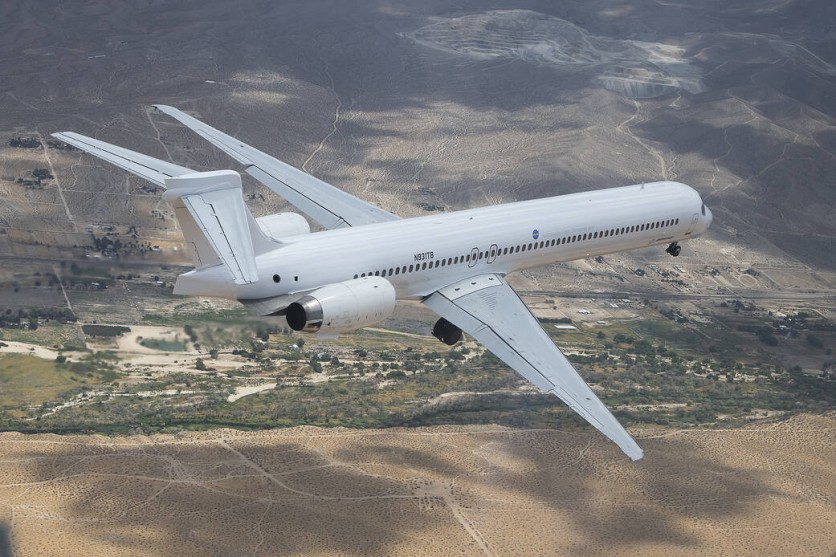NASA and Boeing have achieved a significant milestone in the Sustainable Flight Demonstrator project, marking progress toward a potential new era of aviation.
Boeing flew an MD-90 aircraft from Victorville, California, to its Palmdale facility on August 15, initiating the aircraft's conversion into the X-66A experimental aircraft.

NASA Collaborates With Boeing
Boeing's key modifications to the MD-90 will involve the replacement of its wings with a new set that boasts a sleeker, elongated design supported by diagonal struts.
This innovative concept, known as the Transonic Truss-Braced Wing configuration, promises to enhance fuel efficiency compared to existing top-tier commercial aircraft. Collaborating with NASA, Boeing is embarking on the construction, testing, and flight of the X-66A, which will serve as a full-scale test aircraft.
The X-66A's primary objective aligns with the United States' ambitious goal of net-zero aviation greenhouse gas emissions, as outlined in the US Aviation Climate Action Plan proposed by the White House.
Notably, the X-66A is the inaugural X-plane specifically engineered to contribute to achieving net-zero aviation greenhouse gas emissions. This effort underscores the joint commitment of NASA and Boeing to advance sustainable aviation technologies and support broader environmental goals.
Read Also : More Americans Prefer NASA Missions Against Killer Asteroids Instead of Mars Expeditions: Survey
NASA, SpaceX Set to Launch Crew-7 to the ISS
In a parallel development, NASA and SpaceX are preparing for the Crew-7 mission, slated for launch on August 25. The Crew-7 mission holds international significance as it will involve a team of four astronauts representing various space agencies.
Among the crew members are NASA's Jasmin Moghbeli from the United States, Andreas Mogensen from the European Space Agency (ESA) representing Denmark, Satoshi Furukawa from the Japan Aerospace Exploration Agency (JAXA), and Konstantin Borisov from Russia's Roscosmos.
Scheduled for takeoff from the Kennedy Space Center in Florida, the launch of the Crew-7 mission will be facilitated by SpaceX's Falcon 9 rocket. The liftoff is planned for 3:49 a.m. ET (00:49 a.m. PT), ushering in a new chapter of international collaboration in space exploration.
As part of the pre-launch preparations, the Crew-7 members will undergo a mandatory two-week quarantine period-a customary practice ahead of all International Space Station (ISS) missions.
This quarantine phase, adhering to strict health protocols, aims to ensure the well-being of the crew members and the astronauts already aboard the ISS. During this quarantine period, interactions with individuals outside the controlled environment are minimized to prevent potential health risks.
While select members of the launch and flight teams are permitted limited interactions following specific guidelines, most communication occurs remotely to uphold the highest standards of safety and health, according to NASA protocols.
Related Article : Are Talking Spaceships Coming Soon? NASA to Revolutionize Space Exploration with AI-Powered ChatGPT-Like Interface

ⓒ 2026 TECHTIMES.com All rights reserved. Do not reproduce without permission.




